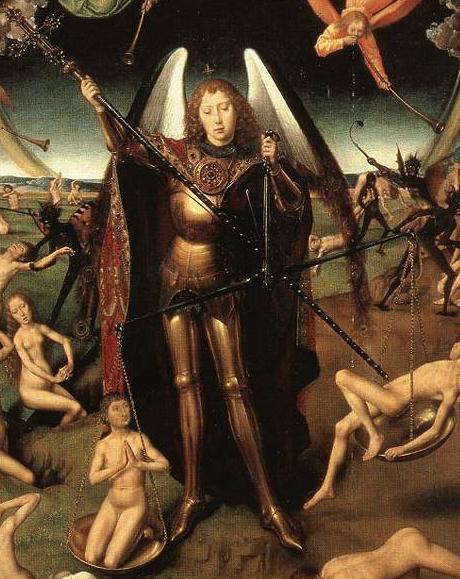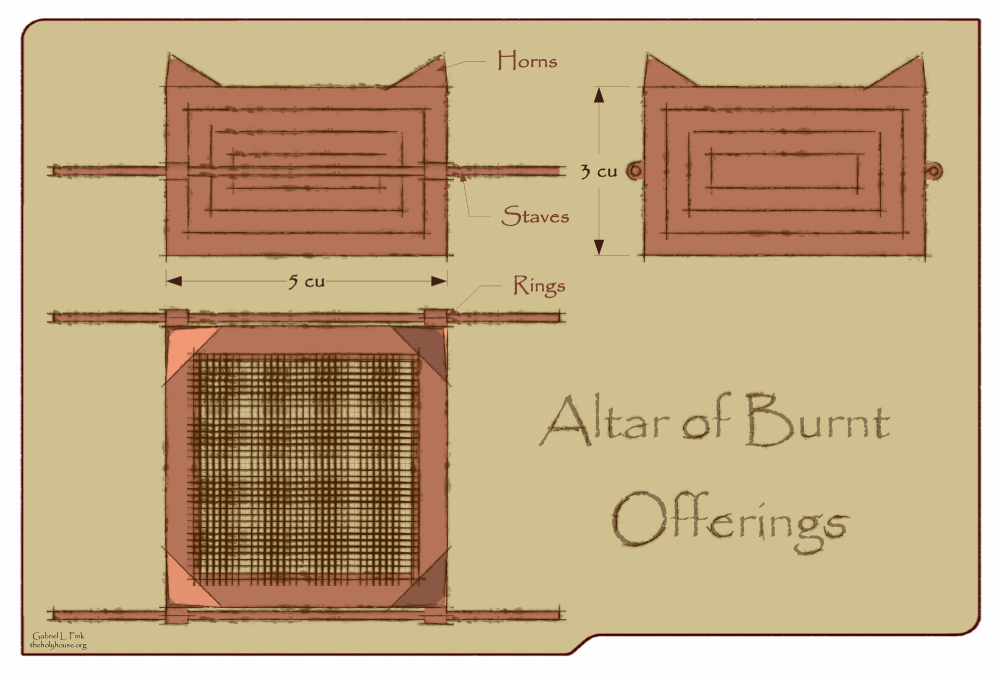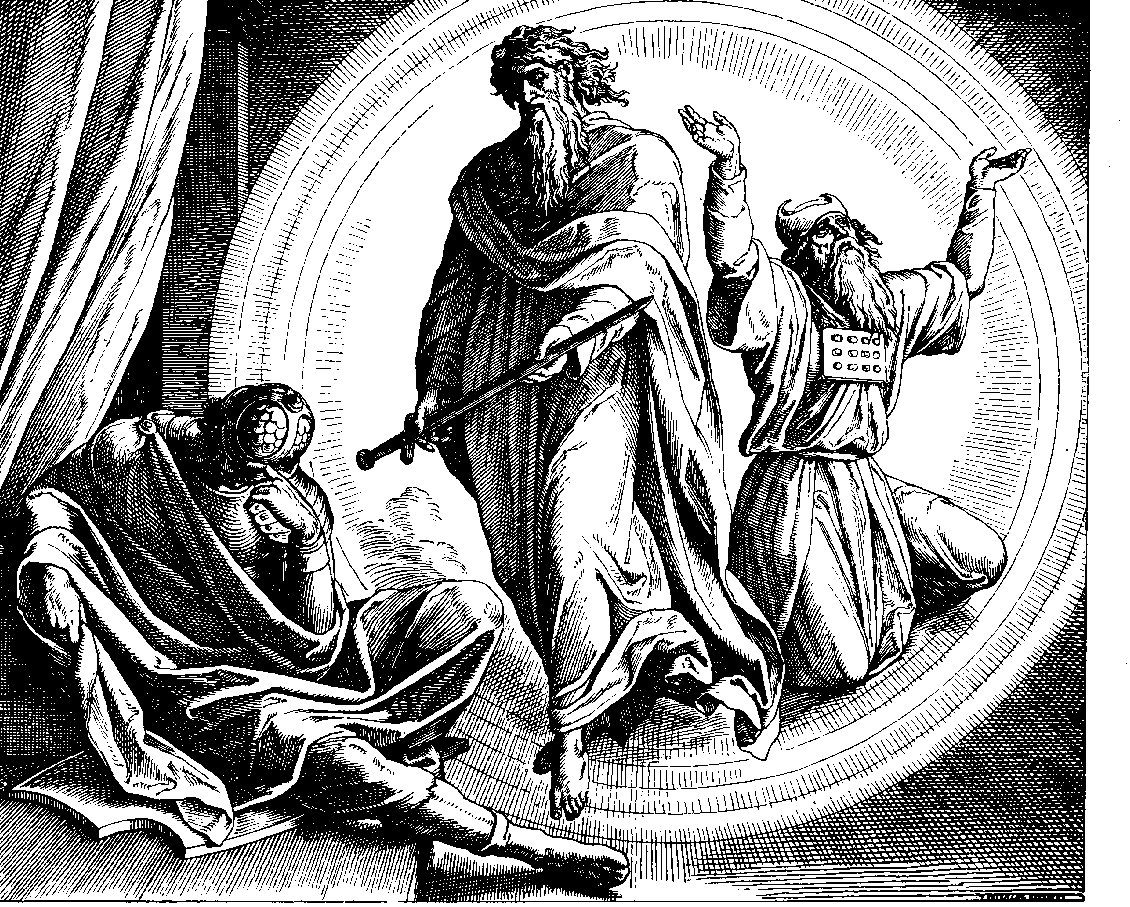|
Abomination Of Desolation
"Abomination of desolation" is a phrase from the Book of Daniel describing the pagan sacrifices with which the 2nd century BC Greek king Antiochus IV Epiphanes replaced the twice-daily offering in the Second Temple, Jewish temple, or alternatively the altar on which such offerings were made. In the 1st century AD it was taken up by the authors of the gospels in the context of Siege of Jerusalem (70 CE), the Roman destruction of Jerusalem and the temple in the year 70, with the Gospel of Mark placing the "abomination of desolation" into a speech by Jesus concerning the Second Coming. It is widely accepted that Mark was the primary source used by the authors of the Gospel of Matthew and of Gospel of Luke, Luke for their parallel passages, with Matthew 24:15–16 adding a reference to Daniel and Luke 21:20–21 giving a description of the Roman armies ("But when you see Jerusalem surrounded by armies..."); in all three it is likely that the authors had in mind a future Christian esch ... [...More Info...] [...Related Items...] OR: [Wikipedia] [Google] [Baidu] |
Getty Villa - Collection (5305219094)
Getty may refer to: The Getty family and its businesses * Getty family ** George Getty (1855–1930), American lawyer and father of J. Paul Getty ** J. Paul Getty (1892–1976), wealthy American industrialist and founder of Getty Oil ** Talitha Getty (born Talitha Dina Pol, 1940–1971), Paul Getty, II's second wife ** Gordon Getty (born 1933), son of J. Paul Getty ** Ann Getty (1941–2020), wife of Gordon Getty ** Paul Getty (1932–2003), son of J. Paul Getty, born Eugene Paul Getty and later also known as John Paul Getty II ** John Paul Getty III (1956–2011), son of Paul Getty ** Balthazar Getty (born 1975), son of John Paul Getty III, and American actor ** Mark Getty (born 1960), son of Paul Getty, and founder of Getty Images ** Domitilla Getty, ex-wife of Mark Getty, and Italian artist and designer ** Ariadne Getty (born 1962), daughter of Paul Getty, and American philanthropist ** August Getty (born 1994), son of Ariadne Getty, and American fashion designer ** Nats Get ... [...More Info...] [...Related Items...] OR: [Wikipedia] [Google] [Baidu] |
Daniel's Final Vision
Chapters 10, 11, and 12 of the Book of Daniel in the Hebrew Bible and the Christian Old Testament comprise Daniel's final vision. The vision describes a series of coming conflicts between an unnamed "King of the North" and a "King of the South", ultimately leading to the " time of the end", when Israel will be vindicated. The dead will be raised: some to everlasting life, some to shame and everlasting contempt. Although set during the 6th century BC, the Book of Daniel was written in reaction to the persecution of the Jews by the Greek king Antiochus IV Epiphanes in 167–164 BC. Its authors were the ''maskilim'' (the "wise"), of whom Daniel is one: "Those among the people who are wise shall make many understand ..." Its fundamental theme is God's control over history. The climax comes with the prophecy of the resurrection of the dead. Daniel 7 speaks of the kingdom of the saints or "holy ones" of the Most High, but Daniel 10–12 does not say that history will end with the co ... [...More Info...] [...Related Items...] OR: [Wikipedia] [Google] [Baidu] |
First Jewish–Roman War
The First Jewish–Roman War (66–74 CE), also known as the Great Jewish Revolt, the First Jewish Revolt, the War of Destruction, or the Jewish War, was the first of three major Jewish rebellions against the Roman Empire. Fought in the province of Judaea, it resulted in the destruction of Jerusalem and the Jewish Temple, mass displacement, land appropriation, and the dissolution of the Jewish polity. Judaea, once independent under the Hasmoneans, fell to Rome in the first century BCE. Initially a client kingdom, it later became a directly ruled province, marked by the rule of oppressive governors, socioeconomic divides, nationalist aspirations, and rising religious and ethnic tensions. In 66 CE, under Nero, unrest flared when a local Greek sacrificed a bird at the entrance of a Caesarea synagogue. Tensions escalated as Governor Gessius Florus looted the temple treasury and massacred Jerusalem's residents, sparking an uprising in which rebels killed the Roman garrison ... [...More Info...] [...Related Items...] OR: [Wikipedia] [Google] [Baidu] |
Baetyl
A baetyl (; also betyl), literally "house of god", is a sacred stone (sometimes believed to be a meteorite) that was venerated and thought to house a god or deity. The most famous example is the Omphalos stored in the Temple of Apollo at the Greek town of Delphi. The term baetyl was used in ancient Near Eastern sources, in the form of "beth-el", as well as in Greek and Roman sources, as a ''baitylos''. In the former, the term was used to refer to the names of gods or places. Examples include Bethel, a location described in the Hebrew Bible, and the deity Bethel, who was mentioned in texts like Esarhaddon's Treaty with Ba'al of Tyre and the Elephantine papyri. In the latter, the word was used to describe a round stone that had fallen from the sky (i.e. a meteorite). The word ''baetyl'' has taken on a vague use in modern writing. It has been debated both how ancient and modern usage of this word compare with one another. And, among modern historians, concerns have risen over the ... [...More Info...] [...Related Items...] OR: [Wikipedia] [Google] [Baidu] |
Altar (Bible)
Altars (, ''mīzbēaḥ'', "a place of slaughter or sacrifice") in the Hebrew Bible were typically made of earth () or unwrought stone (). Altars were generally erected in conspicuous places (; ; ; ; ). The first time the word altar is mentioned and recorded in the Hebrew Bible is that it was erected by Noah, it does specify that there was an altar in (). Other altars were erected by Abraham (; ; ;), by Isaac (), by Jacob (; ), by Moses (), and by Saul (1 Samuel 14:35). After the theophany on Biblical Mount Sinai, in the Tabernacle, and afterwards in the Temple in Jerusalem, only two altars are mentioned: the Altar of Burnt Offering and the Altar of Incense. Altar of burnt offering The first altar was the Altar of Burnt Offering (''mizbeach ha'olah''; ), also called the Brasen Altar (), the Outer Altar (''mizbeach hachitzona''), the Earthen Altar (''mizbeach adamah''), the Great Altar (''mizbeach hagedola'') and the Table of the Lord (). This was the outdoor altar and stood in th ... [...More Info...] [...Related Items...] OR: [Wikipedia] [Google] [Baidu] |
Meteorite
A meteorite is a rock (geology), rock that originated in outer space and has fallen to the surface of a planet or Natural satellite, moon. When the original object enters the atmosphere, various factors such as friction, pressure, and chemical interactions with the atmospheric gases cause it to heat up and radiate energy. It then becomes a meteor and forms a Meteoroid#Fireball, fireball, also known as a shooting star; astronomers call the brightest examples "Bolide#Astronomy, bolides". Once it settles on the larger body's surface, the meteor becomes a meteorite. Meteorites vary greatly in size. For geologists, a bolide is a meteorite large enough to create an impact crater. Meteorites that are recovered after being observed as they transit the atmosphere and impact event, impact Earth are called meteorite falls. All others are known as meteorite finds. Meteorites have traditionally been divided into three broad categories: stony meteorites that are rocks, mainly composed of sil ... [...More Info...] [...Related Items...] OR: [Wikipedia] [Google] [Baidu] |
Porphyry (philosopher)
Porphyry (; ; – ) was a Neoplatonic philosopher born in Tyre, Roman Phoenicia during Roman rule. He edited and published the '' Enneads'', the only collection of the work of Plotinus, his teacher. He wrote original works in the Greek language on a wide variety of topics, ranging from music theory to Homer to vegetarianism. His '' Isagoge'' or ''Introduction'', an introduction to logic and philosophy, was the standard textbook on logic throughout the Middle Ages in its Latin and Arabic translations. Porphyry was, and still is, also well-known for his anti-Christian polemics. Through works such as ''Philosophy from Oracles'' and '' Against the Christians'' (which was banned by Constantine the Great), he was involved in a controversy with early Christians. Life The ''Suda'' (a 10th-century Byzantine encyclopedia based on many sources now lost) reports that Porphyry was born in Tyre, however, other sources report that he was born in Batanaea, present-day Syria . His par ... [...More Info...] [...Related Items...] OR: [Wikipedia] [Google] [Baidu] |
2 Maccabees
2 Maccabees, also known as the Second Book of Maccabees, Second Maccabees, and abbreviated as 2 Macc., is a deuterocanonical book which recounts the persecution of Jews under King Antiochus IV Epiphanes and the Maccabean Revolt against him. It concludes with the defeat of the Seleucid Empire general Nicanor in 161 BC by Judas Maccabeus, the leader of the Maccabees. 2 Maccabees was originally written in Koine Greek by an unknown diaspora Jew living in Hellenistic Egypt. It was likely written some time between 150 and 100 BC. Together with the book 1 Maccabees, it is one of the most important sources on the Maccabean Revolt. The work is not a sequel to 1 Maccabees but rather its own independent rendition of the historical events of the Maccabean Revolt. It both starts and ends its history earlier than 1 Maccabees, beginning with an incident with the Seleucid official Heliodorus attempting to tax the Second Temple in 178 BC, and ending with the Battle of Adasa in 161 BC. So ... [...More Info...] [...Related Items...] OR: [Wikipedia] [Google] [Baidu] |
Zeus
Zeus (, ) is the chief deity of the List of Greek deities, Greek pantheon. He is a sky father, sky and thunder god in ancient Greek religion and Greek mythology, mythology, who rules as king of the gods on Mount Olympus. Zeus is the child of Cronus and Rhea (mythology), Rhea, the youngest of his siblings to be born, though sometimes reckoned the eldest as the others required disgorging from Cronus's stomach. In most traditions, he is married to Hera, by whom he is usually said to have fathered Ares, Eileithyia, Hebe (mythology), Hebe, and Hephaestus.Hard 2004p. 79 At the oracle of Dodona, his consort was said to be Dione (Titaness/Oceanid), Dione, by whom the ''Iliad'' states that he fathered Aphrodite. According to the ''Theogony'', Zeus's first wife was Metis (mythology), Metis, by whom he had Athena.Hesiod, ''Theogony'886900 Zeus was also infamous for his erotic escapades. These resulted in many divine and heroic offspring, including Apollo, Artemis, Hermes, Persephone, D ... [...More Info...] [...Related Items...] OR: [Wikipedia] [Google] [Baidu] |
Interpretatio Graeca
, or "interpretation by means of Greek [models]", refers to the tendency of the ancient Greeks to identify foreign deities with their own gods. It is a discourse used to interpret or attempt to understand the mythology and religion of other cultures; a Comparative religion, comparative methodology using Religion in ancient Greece, ancient Greek religious concepts and practices, List of Greek deities, deities, and Greek mythology, myths, Comparative mythology, equivalencies, and shared characteristics. The phrase may describe Greek efforts to explain others' beliefs and myths, as when Herodotus describes ancient Egyptian religion, Egyptian religion in terms of perceived Greek analogues, or when Dionysius of Halicarnassus and Plutarch document Cult (religious practice), Roman cults, Roman temple, temples, and practices under the names of equivalent Greek deities. may also describe non-Greeks' interpretation of their own belief systems by comparison or assimilation with Greek model ... [...More Info...] [...Related Items...] OR: [Wikipedia] [Google] [Baidu] |
Philo Of Byblos
Philo of Byblos (, ''Phílōn Býblios''; ; – 141), also known as Herennius Philon, was an antiquarian writer of grammatical, lexicon, lexical and historical works in Greek language, Greek. He is chiefly known for his Phoenician history assembled from the writings of Sanchuniathon. Life Philo was born in the 1st century in Byblos in what is now Lebanon. "He lived into the reign of Hadrian, of which he wrote a history, now lost." His name "Herennius" suggests that he was a client of the ''consul suffectus'' Herennius Severus through whom Philo may have achieved the status of a Roman citizen. Works Philo wrote a dictionary of synonyms, a collection of scientific writers and their works organized by category, a catalogue of cities with their famous citizens, and a ''Vita'' of the Emperor Hadrian. Some of his work is known to us by titles only; others have survived in fragmentary quotes in Christian authors. Among his works were: *''On the Acquisition and Choice of Books'' ... [...More Info...] [...Related Items...] OR: [Wikipedia] [Google] [Baidu] |






